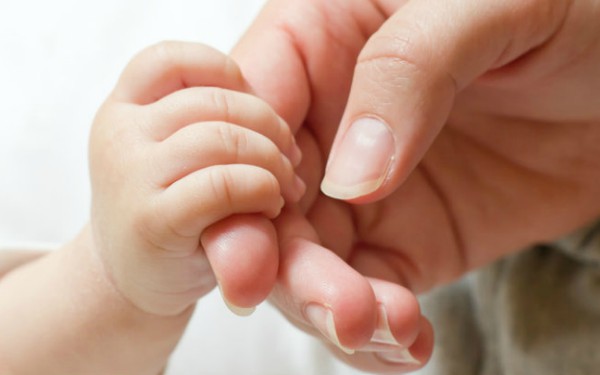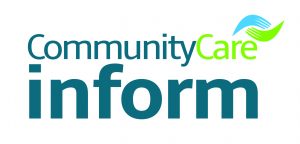

Community Care Inform‘s attachment knowledge and practice hub provides social workers with all the most relevant and up to date information and is authored by professor David Shemmings along with other key contributors including Yvonne Shemmings, David Wilkins and Carly Adams. The attachment knowledge and practice hub provides:
- A precise understanding of attachment theory and the role it can play in supporting families and safeguarding children from maltreatment.
- How to talk confidently about attachment, especially in court (and why this might involve not using the word ‘attachment’ at all).
- Practical guidance and case studies demonstrating concepts such as ‘secure base’, ‘safe haven’, mentalising/mind-mindedness, reflective function, the strange situation procedure, dissociation, loss and trauma.
Community Care and Community Care Inform are examining how evidence informs important areas of practice. In the latest instalment, David Shemmings and Yvonne Shemmings look at disorganised attachment
Disorganised attachment refers to momentary behaviours displayed by children if they find themselves in anxiety-provoking situations into which an abusive caregiver enters. Because they don’t know what to do, they experience what American academic Mary Main called “fear without solution” and end up behaving in bizarre ways, albeit only for a few seconds. Older children display disorganised attachment behaviours when they contemplate attachment-related scenarios involving caregivers.
In some parts of the media, social workers and other professionals involved in safeguarding children are either portrayed as woolly-thinking do-gooders or as interfering busy-bodies. While social work – like all professions – has its share of procrastinators, the perceived failings around child protection are not necessarily the fault of the professionals, but as a result of gaps in our knowledge about the signs and causes of abuse.
The problem is that we do not know enough from research about the connections between “carer characteristics” – such as parental mental ill-health, or alcohol and substance misuse – and child maltreatment. They are strongly correlated; but correlation is not the same as causation.
Take the known correlation between “being an abuser” and “having been abused as a child”. From current research, if we were to track 100 maltreated children who later become parents, about 30 will go on to harm a child of their own (Crittenden, 2008), leaving 70 who will not. The problem for social workers is that they only come into contact with the 30 who do; to them, it appears consistent that children who were abused themselves are more likely to become abusers of their own children.
We have just completed a major review of contemporary research into disorganised attachment which analyses key intervening variables operating between “carer characteristics” and maltreatment (Shemmings and Shemmings, forthcoming March 2011). These findings also include research into the neurobiology of maltreatment (see McCrory et al, 2010). This concludes that early maltreatment is biochemically toxic, because it changes the way the brain develops as well as how the mind makes sense of relationships (National Scientific Council for the Developing Child, 2009).
Our Maltreatment Pathway Model (see diagram) and the Assessment of Disorganised Attachment and Maltreatment (Adam) Project is already helping professionals feel more confident when assessing why it is that some parents abuse their children. The model identifies three key predictors of maltreatment signalled by parental behaviour, alongside one child-related indicator of maltreatment, namely disorganised attachment.
The three key predictors of maltreatment from the parents’ behaviour are:
● Unresolved loss and trauma (see Madigan et al, 2006). This refers to significantly repressed or denied interpersonal losses which re-emerge under conditions reminding a parent of their own vulnerability. Caring for infants and toddlers is one such condition. Unresolved loss and trauma may be accompanied by dissociative experiences such as “blanking out”; often a person will also experience symptoms of post traumatic stress disorder.
● Disconnected and extremely insensitive parenting (Out et al, 2009). A consequence of unresolved loss and trauma is that parenting includes sudden changes in behaviour which are neither accompanied by explanatory gestures or vocalisations, nor by signs of affection or playfulness. Such disconnected parenting also includes frightened or frightening behaviour and disruptive emotional communication. Extremely insensitive parenting denotes caregiving that is excessively withdrawn and neglectful or, conversely, over-intrusive and aggressive, typically involving rough handling and hostile language (Lyons-Ruth and Jacobvitz, 2008).
● Low parental mentalisation and reflective function (see Allen et al, 2008; Fonagy and Target, 2005). This is a significantly reduced ability to appreciate that others have different intentions and feelings from one’s own. An example of low reflective function is the mother who didn’t see why, on a cold morning, she needed to put her one-year old son’s shoes and socks on because “my feet are like toast”. Parents with low reflective function often speak about their babies ”hating them”. Such misattributions are found among parents who maltreat their children (Allen et al, 2008; Crittenden, 2008; Slade, 2008).
Mary Main used the evocative phrase “fear without solution” (Main and Hesse, 2002) to describe situations when a child is anxious and into which their caregiver enters, either literally or in the mind of the child. In such circumstances, their attachment behaviour fails temporarily because they are simultaneously frightened by an anxiety-provoking situation – such as being in a room on their own – and by the appearance of a caregiver. For example, children have been seen walking towards the caregiver but with their head turned the other away.
We established the Adam Project in 2009 to help professionals investigating allegations of maltreatment, in partnership with five London boroughs. By the end of a four-day course, participants can draw upon a number of assessment techniques adapted for use pragmatically by busy child protection practitioners. The five pilot organisations have also become increasingly interested in interventions to help families. To that end we are working with Leiden University in the Netherlands to train small groups of project members in the use of Video-feedback Intervention to promote Positive Parenting (VIPP, Juffer et al, 2008).
In conclusion, practitioners routinely tell us that the methods used in the Adam Project give them more confidence, not only to protect children but also to help parents who are struggling. Clearly, more research would be welcome.
Questions for practitioners to consider when observing interactions between a child and their parents
● Does a toddler show signs of “fear without solution” when a parent or care giver enters the room after a child has been left on their own for a short period?
● Does a parent show signs of disconnected or extremely insensitive parenting when asked to undertake a series of guided care-giving tasks that progressively include mild challenges, such as clearing up paints or toys?
● Does the parent show signs of extreme discomfort, such as sweating, or becoming “spaced-out” when recalling their own childhood?
● Does the parent show a marked inability to appreciate that their child has different intentions, experiences and feelings from their own? Do they misattribute intentions to infants and very young children (for example, “my baby hates me”)?
Learning points for practitioners
● Although strongly correlated with abuse, caregiver characteristics – such as parental mental ill-health, serious drug or alcohol use, or having been abused as a child – are unreliable predictors of maltreatment.
● Disorganised attachment is a more reliable indicator of maltreatment.
● Children who are abused are likely to show disorganised attachment behaviour, which manifests itself differently depending on the age of the child.
● Certain caregiver behaviours have also been shown to be more reliably predictive of maltreatment. These are: unresolved loss and trauma; disconnected or extremely insensitive parenting; and low reflective function.
● Used sensitively and in combination with open, accountable and compassionate practice, the Adam Pathway Model is now helping social workers feel more confident when assessing and working directly with families where there are child protection concerns.
Professor David Shemmings has been an academic for nearly 25 years producing more than 60 publications, many of which discuss research on child protection. He began his career working with traumatised adolescents and became a senior manager in social services. Yvonne Shemmings has trained child protection professionals for the past 12 years, before which she was a local authority social worker, team leader and manager.
Other information in this area can be found at Inform. Inform subscribers can access a guide on disorganised attachment: Evidence-based research into disorganised attachment and child maltreatment
Not an Inform subscriber? Email Kim Poupart to request a free trial
References and key texts
● Allen, Fonagy, and Bateman (2008), Mentalising in Clinical Practice, American Psychiatric Publishing
● Crittenden (2008), Raising Parents: Attachment, parenting and child safety, Willan
● Fonagy and Target (2005), “Bridging the Transmission Gap: An end to an important mystery of attachment research?”, Attachment and Human Development, 7, pp 333-343.
● Juffer, Bakermans-Kranenburg, Van Ijzendoorn (2008), Promoting Positive Parenting: An attachment-based intervention, Routledge
● Lyons-Ruth and Jacobvitz (2008), “Attachment disorganisation: genetic factors, parenting contexts, and developmental transformation from infancy to adulthood”, Handbook of Attachment: Theory, Research and Clinical Applications, pp 666-697, Guilford.
● Madigan, Bakermans-Kranenburg, van Ijzendoorn, Moran, Pederson, and Benoit (2006), “Unresolved states of mind, anomalous parenting behaviour, and disorganized attachment: a review and meta-analysis of a transmission gap”, Attachment and Human Development, 8, pp.89-111.
● McCrory, De Brito, and Viding (2010), “Research review: the neurobiology and genetics of maltreatment and adversity”, Journal of Child Psychology and Psychiatry.
● National Scientific Council on the Developing Child (2009), Excessive Stress Disrupts the Architecture of the Developing Brain, Center on the Developing Child, Harvard University.
● Out, Bakermans-Kranenburg, and van Ijzendoorn (2009), “The role of disconnected and extremely insensitive parenting in the development of disorganized attachment: the validation of a new measure”, Attachment and Human Development, 11, pp 419-443.
● Shemmings D and Shemmings Y (forthcoming, March 2011), Understanding Disorganised Attachment: Theory and practice of working with children and families, Jessica Kingsley.
● Slade (2008), Working with Parents in Child Psychotherapy: Engaging the reflective function in mentalisation: Theoretical considerations, research findings and clinical implications, Busch (ed), pp 207-234, Taylor and Francis.
Inform subscribers can access an evidence-based research article by clicking here You will also find more information about how Inform can help you with your practice and how to become a subsriber
What do you think? Join the debate on CareSpace
Keep up to date with the latest developments in social care Sign up to our daily and weekly emails
This article is published in the 27 January 2011 edition of Community Care under the headline “Indicators of disorganised attachment in children”
.style3 {
FONT-SIZE: 12px
}
Other information on www.ccinform.co.uk in this area includes:
NOT AN INFORM SUBSCRIBERTo find out how Inform can help you in your practice, visit ww.ccinform.co.uk or email Kim Poupart to request a free trial


 Bournemouth, Christchurch and Poole
Bournemouth, Christchurch and Poole  Hampshire County Council
Hampshire County Council  Lincolnshire County Council
Lincolnshire County Council  Norfolk County Council
Norfolk County Council  Northamptonshire Children’s Trust
Northamptonshire Children’s Trust  South Gloucestershire Council
South Gloucestershire Council  Wiltshire Council
Wiltshire Council  Wokingham Borough Council
Wokingham Borough Council  Children and young people with SEND are ‘valued and prioritised’ in Wiltshire, find inspectors
Children and young people with SEND are ‘valued and prioritised’ in Wiltshire, find inspectors  How specialist refugee teams benefit young people and social workers
How specialist refugee teams benefit young people and social workers  Podcast: returning to social work after becoming a first-time parent
Podcast: returning to social work after becoming a first-time parent  Podcast: would you work for an inadequate-rated service?
Podcast: would you work for an inadequate-rated service?  Family help: one local authority’s experience of the model
Family help: one local authority’s experience of the model  Workforce Insights – showcasing a selection of the sector’s top recruiters
Workforce Insights – showcasing a selection of the sector’s top recruiters 

 Facebook
Facebook X
X LinkedIn
LinkedIn Instagram
Instagram
Comments are closed.